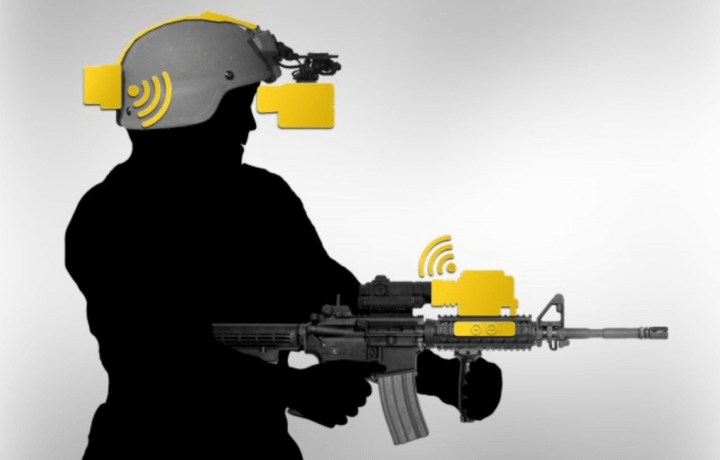There are tales of battles that were lost not because of a short-sighted military leader, but rather because said leader was near-sighted. Among the most infamous was Field Marshal Prince Maurice of Anhalt-Dessau who nearly rode into enemy lines at the Battle of Hockrich during the Seven Years’ War while Confederate General Felix Zollicoffer mistook Union Colonel Speed S. Fry for a fellow Rebel during the Battle of Mills Springs and approached him. As he fled, Fry fired and shot and killed Zollicoffer!
Fortunately today, near-sightedness can be treated in many ways from Lasik surgery to simple glasses. However, improving what soldiers can see has long been a goal for military planners.
Night Vision
The concept of night vision dates back to World War II, but it came into wide use during the Vietnam War. It has been improved steadily in the years since, and this week, Elbit Systems of America announced that it was awarded an Other Transaction Authority (OTA) contract from the U.S. Army for Enhanced Night Vision Google – Bionular (ENVG-B) system.
The new system will provide U.S. warfighters with improved situational awareness during limited visibility conditions, while increasing their lethality through faster target acquisition. The ENVG-B system will now undergo various qualification phases.
The Army didn’t define the overall time-frame for performance of the OTA contract, but the OTA contract could reach a maximum of approximately $442 million. The initial order was for $22.5 million for low-rate initial production (LRIP) of system under the OTA with a period of performance through December of next year.
“The selection of the ENVG-B systems by the U.S Army is a testament to the quality of Elbit Systems of America’s technologies and their unique operational contribution,” said Bezhalel (Butzi) Machlis, Elbit Systems president & CEO. “This contract award demonstrates the significant potential of our night vision activities.”
Elbit Systems of America already has a $249 million five-year ID/IQ contract to supply the Squad Binocular Night Vision Goggles to the U.S. Marine Corps.
A Changing and Augmented Reality
The U.S. Army is also in the process of developing a new augmented reality (AR) system to be integrated into goggles worn by warfighters. This could improve situational awareness capabilities during training, but could also enhance the way soldiers fight.
The new “mixed reality” goggles were developed under the Integrated Visual Augmentation System (IVAS) program, where soldiers are provided a digital display that provides crucial information without the need to look away from a potential combat threat. Additionally, the goggles could provide thermal and low-light sensors, offer rapid target acquisition and aid target identification.
IVAS, along with ENVG-B are part of what Brig. Gen. David Hodne, the Army’s Chief of Infantry, has called the “signature of modernization efforts.” Hodne also heads up the Army’s Soldier Lethality Cross-Functional Team, which is working to help develop how these tools can be used by future warfighters.
Hodne has warned that near-peer threats now match or in some cases exceed the U.S. military’s capabilities and this can include being able to detect American soldiers, which means the enemy could target and engage first.
“Our current capabilities are not sufficient for battlefields distributed in urban and subterranean environments,” Hodne explained in an official U.S. Army news article on the program’s efforts. “And we have to anticipate the implications of new technologies on the battlefield and foster a culture of experimentation and calculated risk-taking.”
While ENVG-B can improve the way soldiers see in lowlight conditions, IVAS can change the way warfighters see and hence interact with the battlefield. The goggles can provide information about enemy positions, while it can also be used to share information including map coordinates and imagery of what is happening on the battlefield.
IVAS features Intra-Soldier Wireless Connectivity, which provides the ability to pass data among squad, platoon and company formations.
Computerized Sights
The third component that could enhance and improve the way soldiers fight is a new advanced sighting system that can lock onto targets, tell the warfighter where to aim, and even fire the gun at the exact right moment.
Meet the Smart Shooter SMASH 2000 sighting system, which consists of an optical sighting sight that can be mounted on a weapon via a standard accessory rail. Soldiers aim as they would with a normal red dot or holographic sight and then press a button on the handguard to “lock on.” From there the software-driven system can then compute the optimal point of aim, even if the target is on the move, and with the aid of laser rangefinder and camera determine when to take the shot.
This can greatly improve the chances of hitting the enemy, but also reduces the collateral damage including inadvertently hitting a bystander or other non-threatening individual. It can also provide video or still images for later analysis.
According to a report from TheDrive, the Smart Shooter SMASH 2000 system has already been deployed among special operators in Syria.
Airborne Targets
Technology like the Smart Shooter can also be used against airborne threats, including those from unmanned aerial systems (UAS) or drones. The Combating Terrorism Technical Support Office (CTTSO) has worked with D-Fend Solutions, a counter-drone solution provider, on its EnForceAir c-sUAS (Counter small Unmanned Aerial Systems) platform. This new technology features targeting algorithms that can track and hit even very small drones traveling at high speed at ranges of up to 120 meters.
While technology can’t change shortsightedness in leaders, it can enhance how we view our adversaries, enabling clearer interactions and decisions. U.S. soldiers aren’t getting new eyes or super vision (at least not yet), but these technologies could be the next best thing for tomorrow’s warfighters.



